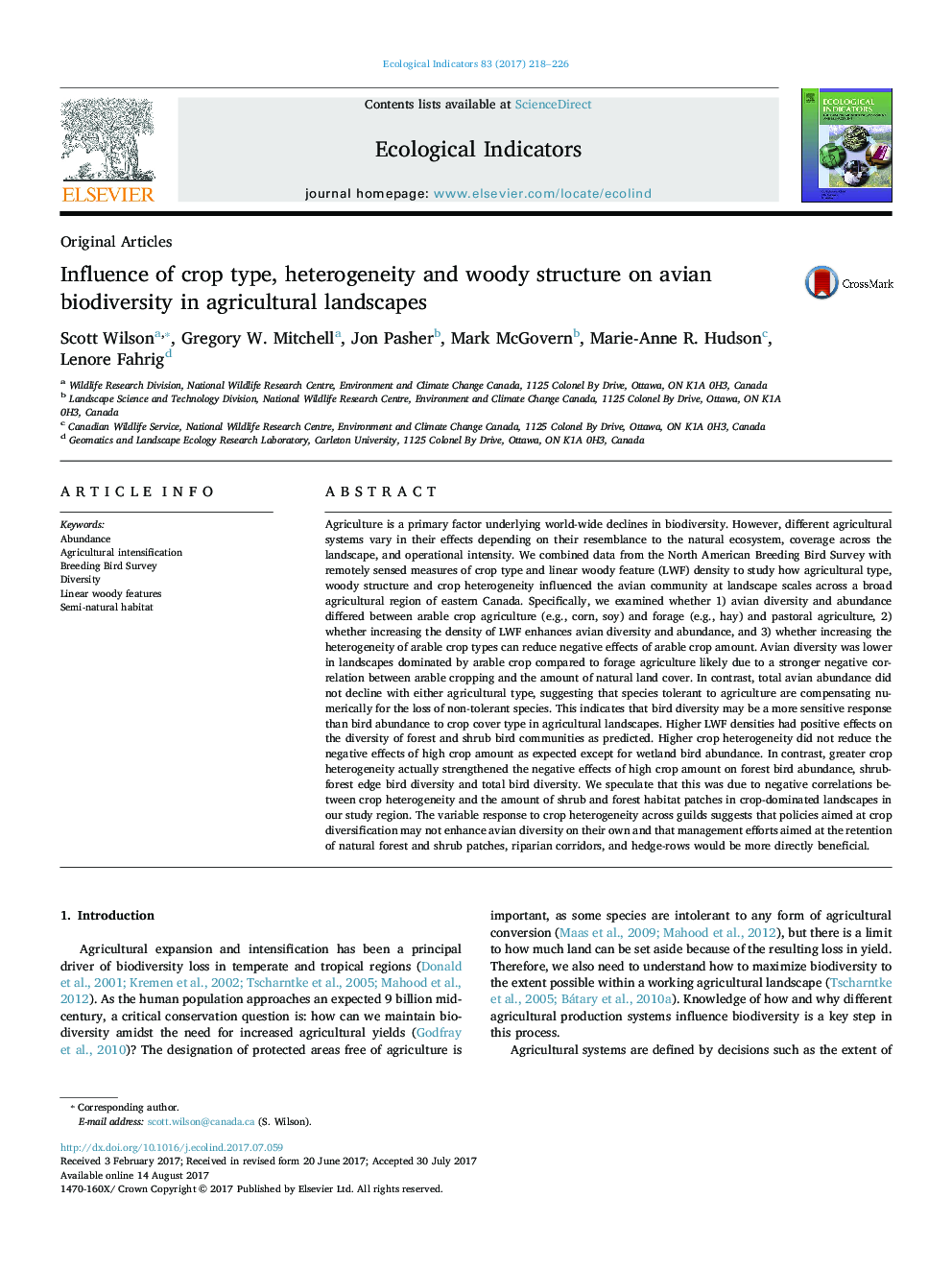| Article ID | Journal | Published Year | Pages | File Type |
|---|---|---|---|---|
| 5741492 | Ecological Indicators | 2017 | 9 Pages |
â¢Avian diversity is more negatively affected by arable crop than forage agriculture.â¢Avian diversity more sensitive to agriculture than avian abundance.â¢Agriculture-tolerant species may compensate for losses of non-tolerant species.â¢Riparian strips and hedgerows enhance avian diversity at landscape scales.â¢Avian community shows a mixed response to higher crop diversity.
Agriculture is a primary factor underlying world-wide declines in biodiversity. However, different agricultural systems vary in their effects depending on their resemblance to the natural ecosystem, coverage across the landscape, and operational intensity. We combined data from the North American Breeding Bird Survey with remotely sensed measures of crop type and linear woody feature (LWF) density to study how agricultural type, woody structure and crop heterogeneity influenced the avian community at landscape scales across a broad agricultural region of eastern Canada. Specifically, we examined whether 1) avian diversity and abundance differed between arable crop agriculture (e.g., corn, soy) and forage (e.g., hay) and pastoral agriculture, 2) whether increasing the density of LWF enhances avian diversity and abundance, and 3) whether increasing the heterogeneity of arable crop types can reduce negative effects of arable crop amount. Avian diversity was lower in landscapes dominated by arable crop compared to forage agriculture likely due to a stronger negative correlation between arable cropping and the amount of natural land cover. In contrast, total avian abundance did not decline with either agricultural type, suggesting that species tolerant to agriculture are compensating numerically for the loss of non-tolerant species. This indicates that bird diversity may be a more sensitive response than bird abundance to crop cover type in agricultural landscapes. Higher LWF densities had positive effects on the diversity of forest and shrub bird communities as predicted. Higher crop heterogeneity did not reduce the negative effects of high crop amount as expected except for wetland bird abundance. In contrast, greater crop heterogeneity actually strengthened the negative effects of high crop amount on forest bird abundance, shrub-forest edge bird diversity and total bird diversity. We speculate that this was due to negative correlations between crop heterogeneity and the amount of shrub and forest habitat patches in crop-dominated landscapes in our study region. The variable response to crop heterogeneity across guilds suggests that policies aimed at crop diversification may not enhance avian diversity on their own and that management efforts aimed at the retention of natural forest and shrub patches, riparian corridors, and hedge-rows would be more directly beneficial.
